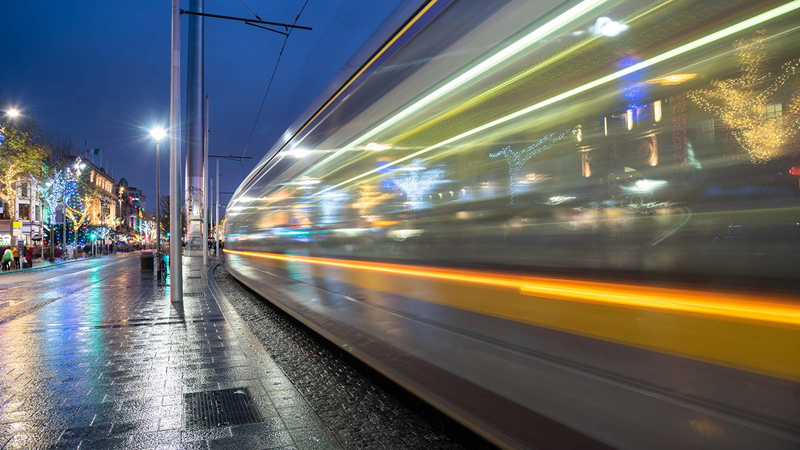Perspectives
The value of good engagement in delivering Ireland’s transport infrastructure
An enabler for long-term economic growth, Ireland’s National Development Plan (NDP) has an integral role to play in delivering a strengthened framework across the country. Supporting the Government’s ambitious decarbonisation plans for infrastructure, it is also backed by a sizeable budget of €165 billion and prioritises investment planning for housing, health, climate action and transport.
And while the Government’s support of fast-tracking major infrastructure delivery has been welcomed, the issue of securing broad public support for major schemes remains challenging.So, with major infrastructure projects coming through the pipeline to support Ireland’s future requirements and commitments to reducing emissions - including through public transport improvements - Annette Hiney, PMO Operations Director at Mace, explains why communities must stand at the core of major transport planning and delivery.
Communities and transport schemes
Since its publication back in 2021, the NDP has been bolstered by the Greater Dublin Transport Strategy and the Climate Action and Low Carbon Development (Amendment) Act, which together state that emissions must reduce by 51% by 2030, setting out Ireland’s path towards zero net-emissions by 2050.
Although the delivery of new public transport schemes are integral in moving people across to more sustainable modes of transport, they still remain some of the most challenging schemes to get local communities on board with.
Their linear nature means that there can be a perceived lack of short or even long-term benefit for local communities and construction can be disruptive, as we saw with LUAS and the Dublin Port Tunnel.
Therefore, it is essential that we think about how communities will be impacted when planning a project and its delivery strategy.
In contrast, transport hubs, which are developed as destinations in their own right, offer tangible economic gains through commercialisation and long-term employment opportunities. For example, mass transit to north Dublin on the proposed Dublin MetroLink, will unlock significant residential and commercial zones, supporting not just travel to and from the city, but also relieving housing pressures, while improving Dublin’s “liveability”.
So, how can we provide the right support to communities living along the routes of new metro, rail, or road schemes? We know from experience that to build up support; we need to engage as early as possible, maintaining a clear, relevant and consistent flow of communications throughout the project lifecycle.
Early engagement can lead to better outcomes
Crucially, by engaging early, we will understand the concerns and aspirations of local people and community groups. This will give invaluable insight into social, environmental and historical considerations and, subsequently, help to shape desired project outcomes.
By taking a cross-section of views into account from the outset, and then continuing in that vein throughout planning and development, we will find solutions together, build trust and foster community buy-in.
An essential component of this approach is creating an inclusive communications and engagement strategy which takes into account the demographics of the area, giving particular focus to hard-to-reach groups.
To achieve broad engagement, it is important to understand your audience, as this ensures that targeted, timely and pertinent content can be created, using channels such as local media and public information events.
We must take the community on a journey and offer everyone the chance to join in on the success. Failure to do so, as we have often seen, will result in heightened local opposition, which has the potential to derail project timelines.
Communications should highlight wider scheme benefits. By doing this, along with addressing legitimate concerns and mistruths, you will help local people see how the scheme can become an asset.
And this isn’t only once the scheme is completed. There will be plenty of occasions to communicate economic, social, jobs and skills benefits which will support local people and businesses. What’s more, by listening to communities earlier on in the delivery process, clients will be able to tailor their approach to meet local needs and unlock and maximise social value.
Communicating the value of your project
There will of course always be groups of people who remain opposed to a scheme. A common issue on metro transport projects for example is when part of the route is above ground and part is tunnelled.
To mitigate perceived disruptions associated with above ground works, truthful engagement that doesn’t shy away from reality and the cost implications associated with tunnelling should be coupled with a commitment to exploring realistic options to manage impacts.
Even though it’s unlikely you will achieve universal buy-in, by building trust early on and creating a reputation as an open and honest project team, you will find these conversations more productive, with solutions easier to come by. In turn, this will reduce project opposition and minimise risk to programme timeline and budget.
While local communities must remain at the forefront of a considerate and outcome driven approach, transport schemes inevitably have a wider customer base and it is important to think about these people too. Whether it’s commuters, businesses, tourists, or the economic regions, the views of these stakeholders need to be captured to establish the desired outcomes and to create a scheme that maximises socioeconomic value.
Unpicking the multitude of stakeholder needs and aspirations isn’t easy. By building a team of dedicated professionals whose job is to openly engage the community, build relationships and secure buy-in from the outset, you will not only do the morally right thing, you will also create an environment that minimises resistance to your plans and supports on time and to budget delivery.











